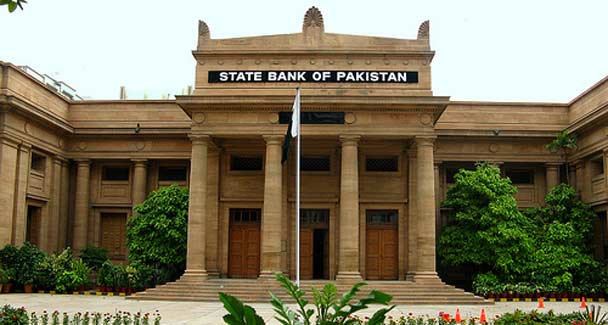
LAHORE: The State Bank of Pakistan on Saturday raised the key interest rate to 8.5 percent for the next two months, an increase of 100 basis points.
This is the fourth rise in the key interest rate since the beginning of 2018 and shows an increase in inflationary pressure and current account deficit are impacting the country’s economy.
In January, the central bank had raised the key interest rate by 25 basis points and was again increased by 50 basis points in May to 6.5 percent, followed by a 100 basis points rise in July to 7.5 percent.
According to a press release issued on Saturday, SBP said Pakistan had experienced notable changes on the political front, which resulted in a positive impact on the business and consumer confidence in the country as reflected in several surveys.
However, the central bank expressed worries on the economic front continue due to rising inflation and large twin deficits, which could likely compromise the sustainability of the high real economic growth.
It added the inflation was inching up, especially from March 2018 onwards and during the first two months (July-August) of the current financial year 2018-19, CPI inflation averaged 5.8 percent against 3.2 percent in same months of FY18 and average of 3.9 percent for the whole of 2018.
The central bank projected average headline inflation to fall in the range between 6.5 to 7.5 percent and takes into consideration higher than expected rise in global oil prices, an increase in domestic gas prices, increase in regulatory duties on imports and continuing second round impact of previous rupee depreciation’s.
Also, SBP mentioned economic activity is likely to slow-down in FY19 as “as the general macroeconomic policy mix is focusing towards stabilization.”
And the government has initiated a fiscal consolidation program and announced regulatory measures to curtail the growing pressures on the external front, said the central bank.
Moreover, it projected domestic demand would fall in the coming months of FY19.
While talking about the recent monetary and fiscal measures, the central bank said they would likely impact large-scale manufacturing (LSM).
Cotton production would likely miss its FY19 target of 14.4 million bales with a negative impact on the agriculture sector growth, stated SBP.
It projected real Gross Domestic Product (GDP) growth for FY19 at around 5.0 percent after taking into consideration the positive effect expected from the contribution of exports led production and higher fertilizer production amidst depleting stocks and better availability of energy.
On the current account deficit front (CAD), the central bank said it continues to pose a challenge. The CAD clocked in at $2.7 billion compared to $2.5billion in the corresponding period of FY18, despite some growth in workers’ remittances and exports in the first two months of FY19 (July-August) and fall in non-oil imports.
Consequently, the foreign exchange reserves of the central bank declined to $9.0 billion as of 19th September 2018 against $9.8 billion at end of FY18.
Furthermore, broad money supply exhibited a seasonal contraction of 1.2 percent during 1st of July to 14th September FY19 against a contraction of 0.9 percent during the corresponding period of FY18.
But private sector credit growth exhibited relatively improved performance due to improved availability of energy, relatively conducive exports demand amid GSP+ status and higher working capital needs because of capacity additions in the last three years.
SBP projected private sector growth trajectory to continue, but at a slower pace than FY18 and forecast monetary growth to be in the range of 10.5 to 11.5 percent during FY19.
The monetary policy committee (MPC) observed “while non-oil imports are responding to the contractionary measures a surge in oil prices is masking this improvement, and as a result the current account deficit remains high; rising trends in inflation mean that real interest rates have fallen and further; the unfolding global developments, whether in terms of oil-price shocks, protectionist trade policies and/or falling flows to the emerging markets, all pose challenges to macroeconomic management in Pakistan.”






















